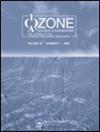Effect of Different Decontamination Protocols Applied to Blood-Saliva Contaminated Dentin Surfaces of Universal Adhesive Resin Post-Etch on Shear Bond Strength
IF 1.4
4区 环境科学与生态学
Q3 ENGINEERING, ENVIRONMENTAL
引用次数: 1
Abstract
ABSTRACT This study was performed to evaluate the effect of different decontamination protocols applied to contaminated surfaces on the recovery of adhesion. Different decontamination protocols were applied to molar teeth contaminated with blood and saliva except the control group. 40 third molar teeth were divided into groups according to the applied decontamination protocols: Group 1(control), Group 2 (water rinse), Group 3 (15-sec re-etch), Group 4 (10-sec re-etch), Group 5 (5-sec re-etch), Group 6 (5% NaOCl), Group 7 (2% chlorhexidine gluconate), Group 8 (ozonated water). Universal adhesive resin (Gluma Universal, Heraus Kulzer) was used in the etch and rinse mode according to the manufacturer’s instructions. Nanohybrid composite material was placed in all groups. Then the Shear Bond strengths of all groups were evaluated after applying 5000 thermal cycles (5–55 °C) to each sample. In the limitation of this in vitro study, it has been shown that rinsing with ozonated water of contaminated surfaces with blood and saliva after etching, has increased the micro-shear bond strength (μSBS) values more than that of in control group values. Also, the application of NaOCl, re-etching with 37% phosphoric acid for 15 seconds, and cleaning with CHX, significantly increase the bonding potential.不同去污方案对牙本质表面血-唾液污染的影响
摘要:本研究旨在评估不同的净化方案对污染表面粘附恢复的影响。除对照组外,对被血液和唾液污染的磨牙采用不同的去污方案。将40颗第三磨牙按照应用去污方案分为组:1组(对照)、2组(水冲洗)、3组(15秒重新蚀刻)、4组(10秒重新蚀刻)、5组(5秒重新蚀刻)、6组(5% NaOCl)、7组(2%葡萄糖酸氯己定)、8组(臭氧化水)。通用粘合树脂(Gluma Universal, Heraus Kulzer)根据制造商的说明用于蚀刻和冲洗模式。各组均放置纳米杂化复合材料。然后对每个样品进行5000次热循环(5-55°C)后评估各组的剪切结合强度。在体外研究的局限性中,研究表明,在蚀刻后用臭氧水冲洗带有血液和唾液的污染表面,微剪切结合强度(μSBS)值比对照组的值增加得更多。此外,应用NaOCl,用37%磷酸重新蚀刻15秒,并用CHX清洗,显著提高了键合电位。
本文章由计算机程序翻译,如有差异,请以英文原文为准。
求助全文
约1分钟内获得全文
求助全文
来源期刊

Ozone: Science & Engineering
环境科学-工程:环境
CiteScore
5.90
自引率
11.10%
发文量
40
审稿时长
2 months
期刊介绍:
The only journal in the world that focuses on the technologies of ozone and related oxidation technologies, Ozone: Science and Engineering brings you quality original research, review papers, research notes, and case histories in each issue. Get the most up-to date results of basic, applied, and engineered research including:
-Ozone generation and contacting-
Treatment of drinking water-
Analysis of ozone in gases and liquids-
Treatment of wastewater and hazardous waste-
Advanced oxidation processes-
Treatment of emerging contaminants-
Agri-Food applications-
Process control of ozone systems-
New applications for ozone (e.g. laundry applications, semiconductor applications)-
Chemical synthesis.
All submitted manuscripts are subject to initial appraisal by the Editor, and, if found suitable for further consideration, to peer review by independent, anonymous expert referees.
 求助内容:
求助内容: 应助结果提醒方式:
应助结果提醒方式:


